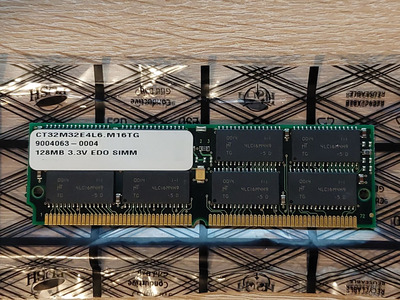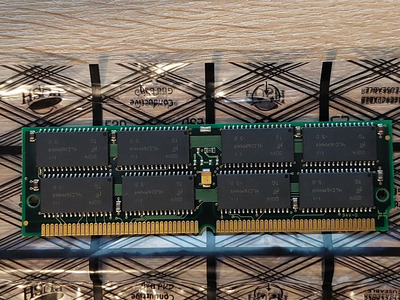First post, by Hirsch
I got hands on 4x 128MB 50ns EDO SIMM modules (72 pin) with Micron chips labeled "MT 4LC16M4H9 TG -5 D". This looked like a perfect match for a build with an Asus P/I-P55T2P4 and an AMD K6-III+ CPU. When testing the modules it turned out that they require a fan on top of them. Otherwise I get rare errors in memtest86+. This wondered me because I was able to run other 3.3V modules on that mainboard without problems.
I found that there are 3.3V EDOs out there which are 5V tolerant and others that aren't. I also found that EDO SIMMs with 3.3V support have presence detect pins so that a mainboard can detect 3.3V modules and supply the proper voltage:
https://www.amigawiki.org/doku.php?id=de:parts:simm
The big question is, whether my Asus mainboard supports this feature or whether it provides 5V whatever is installed in the memory sockets. I googled this topic and the only finding I got was an entry in a German forum where someone claims that the Intel TX chipset is the first one supporting 3.3V EDO RAM:
https://forum.chip.de/discussion/456227/edo-r … 3-v-oder-5-volt
According to this post the Asus P/I-P55T2P4 shouldn't support 3.3V only EDOs, because it has the Intel HX chipset releaased prior to Intel TX. Do you know more about this topic? Which chipsets and mainboards support 3.3V only EDOs? Does the voltage selection work automatically, or do I need to set a jumper?

